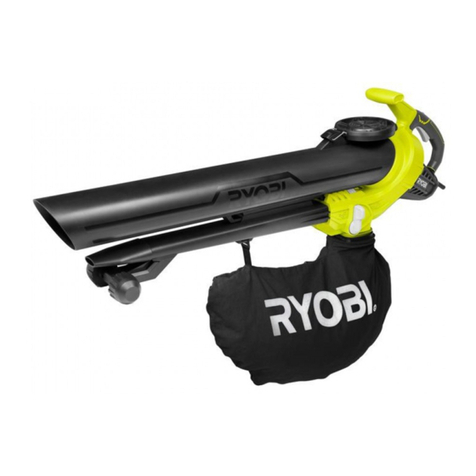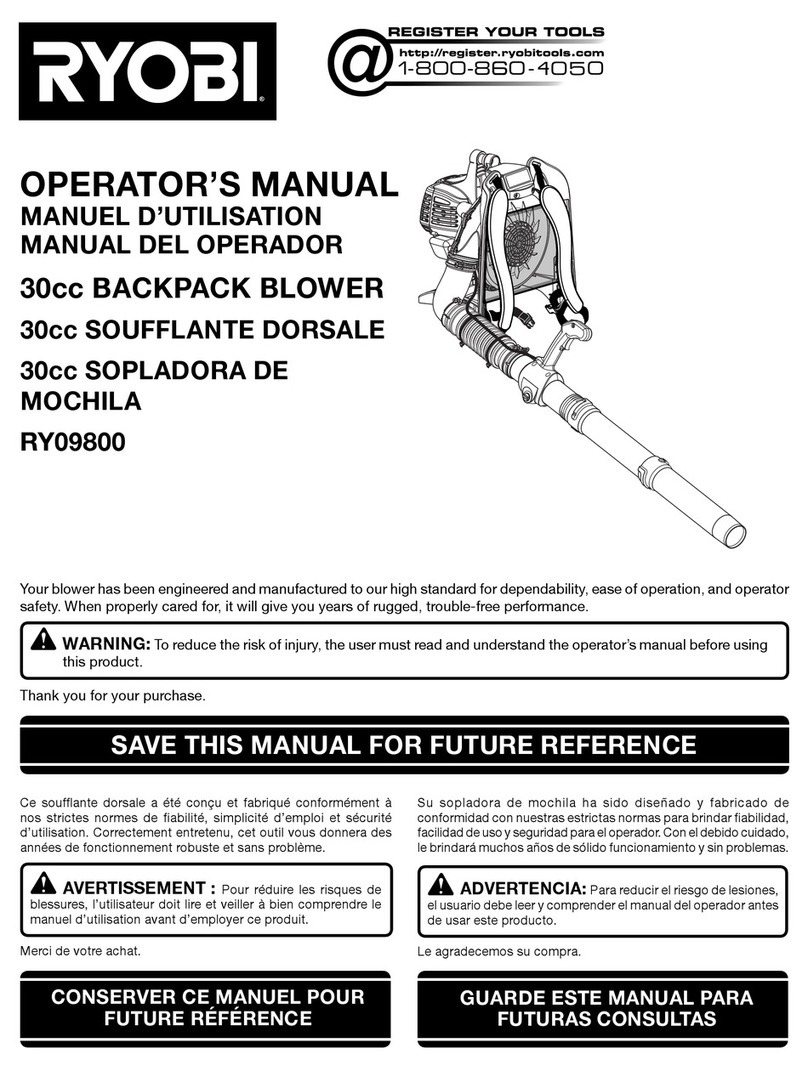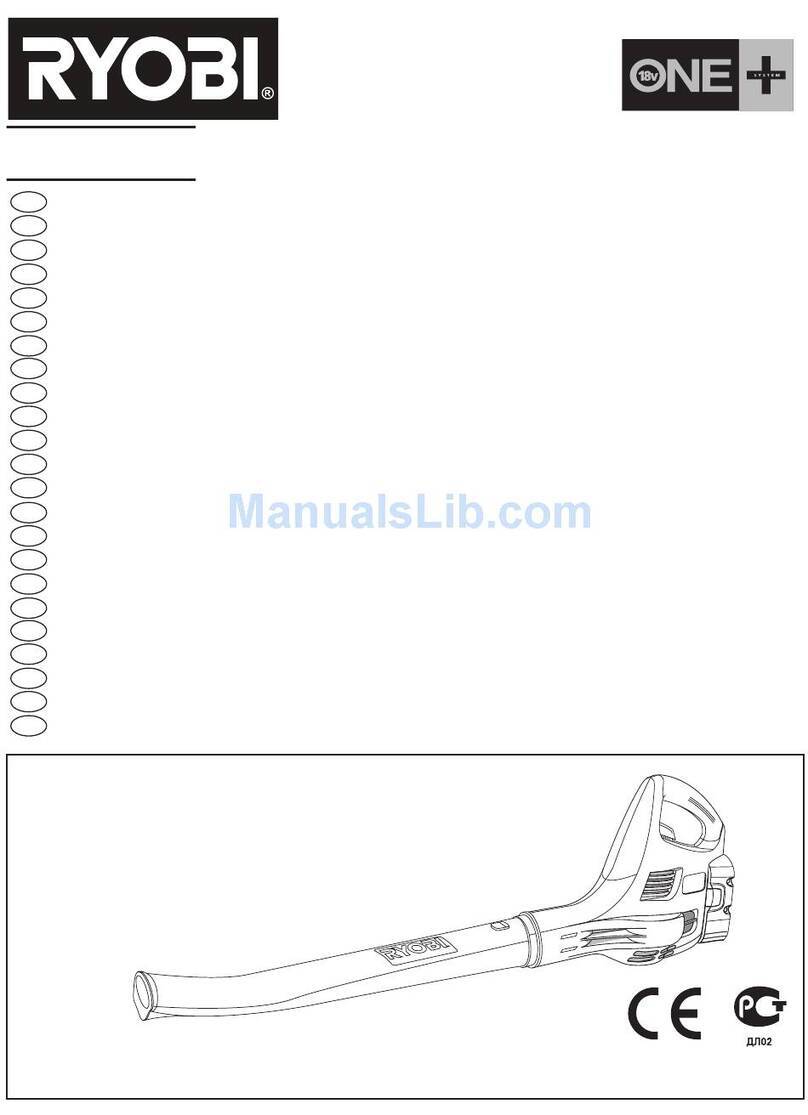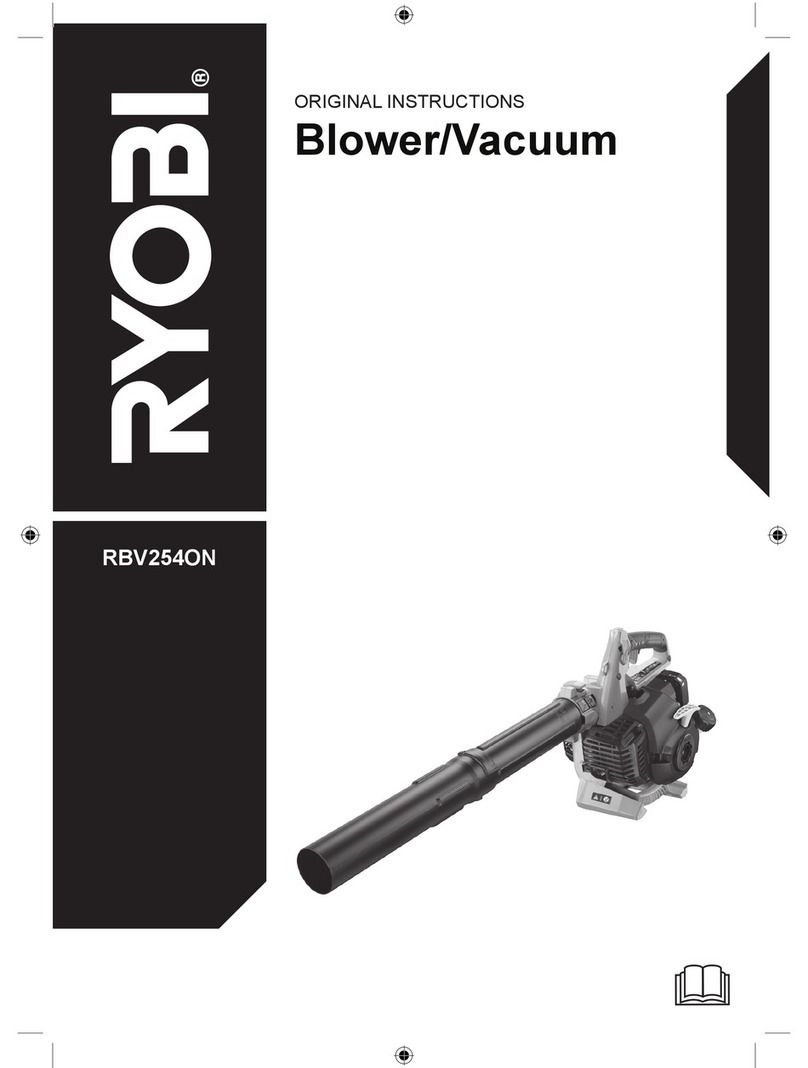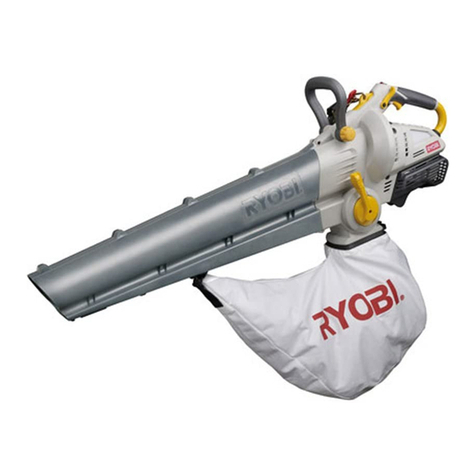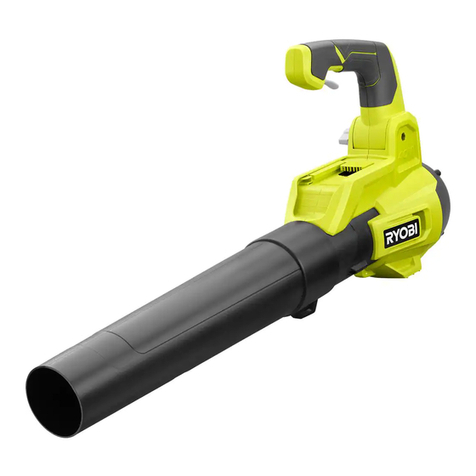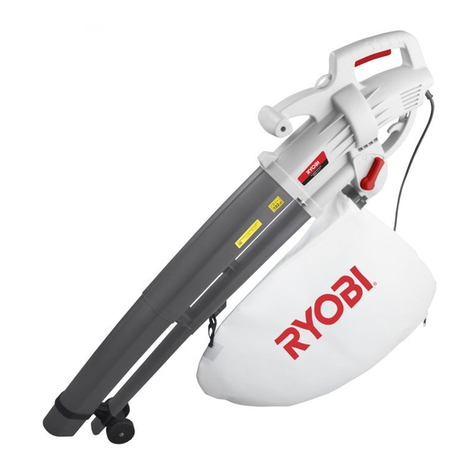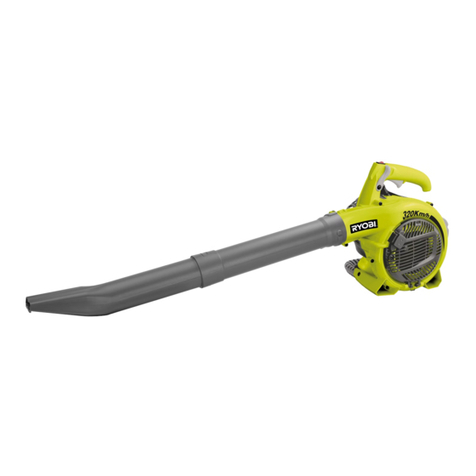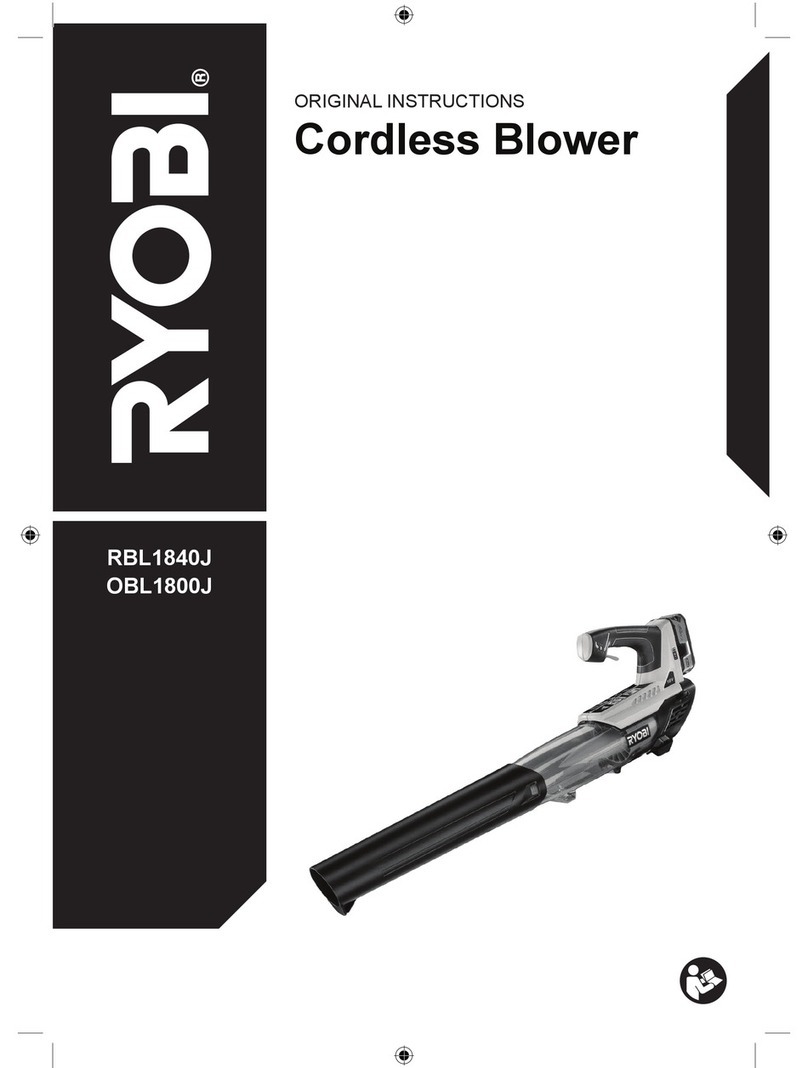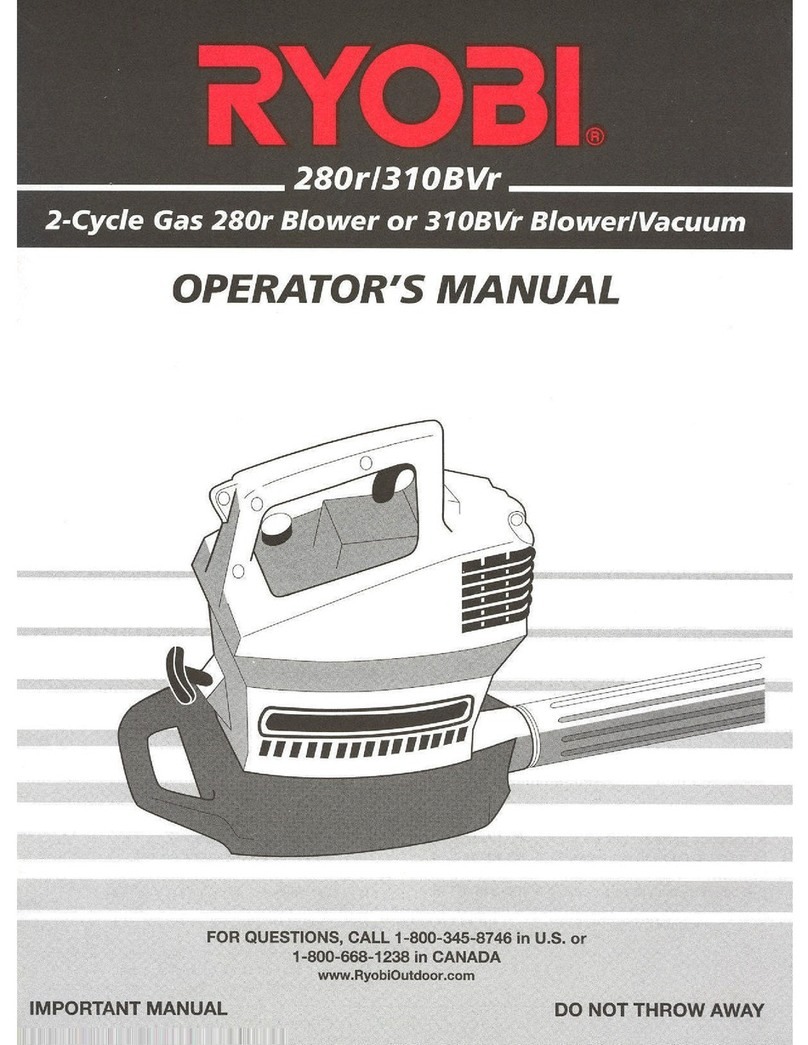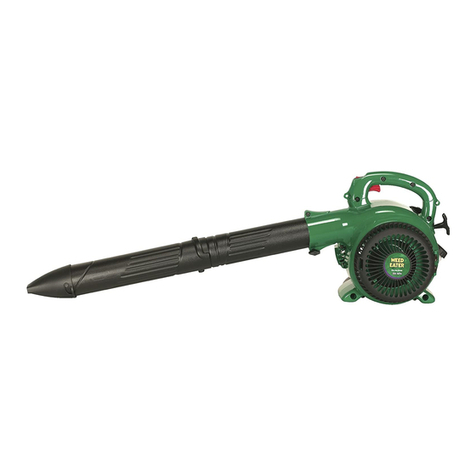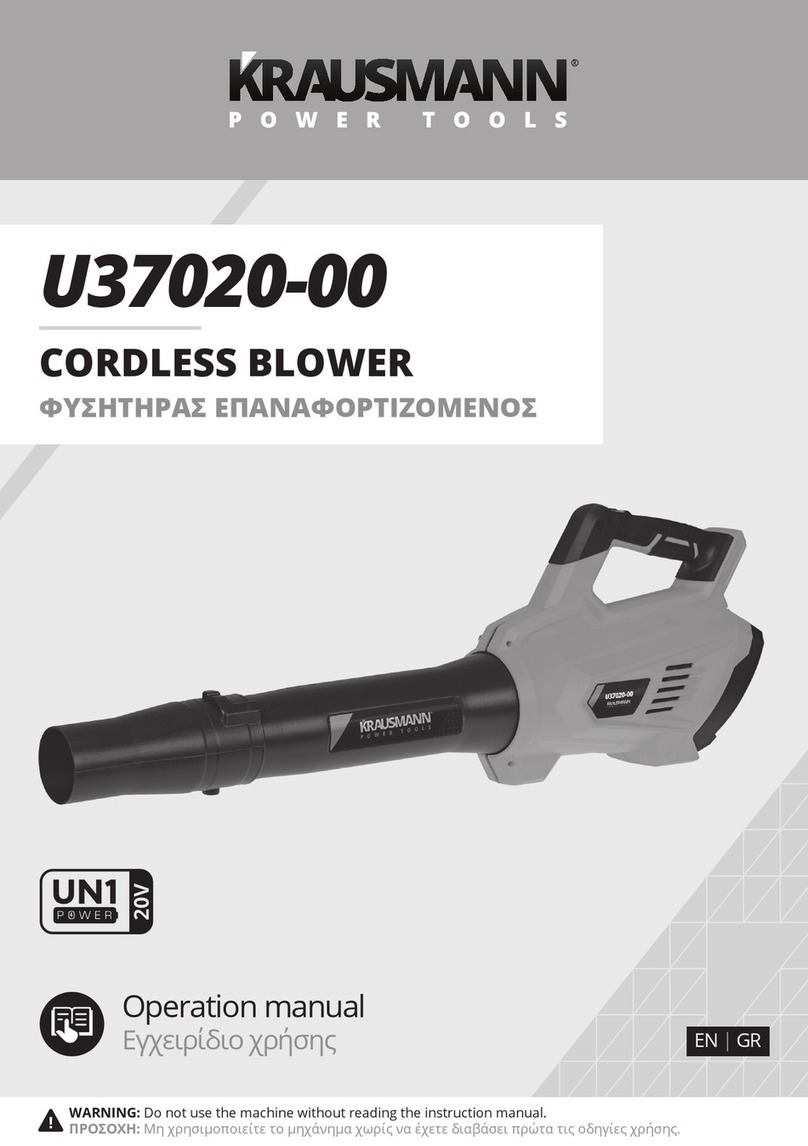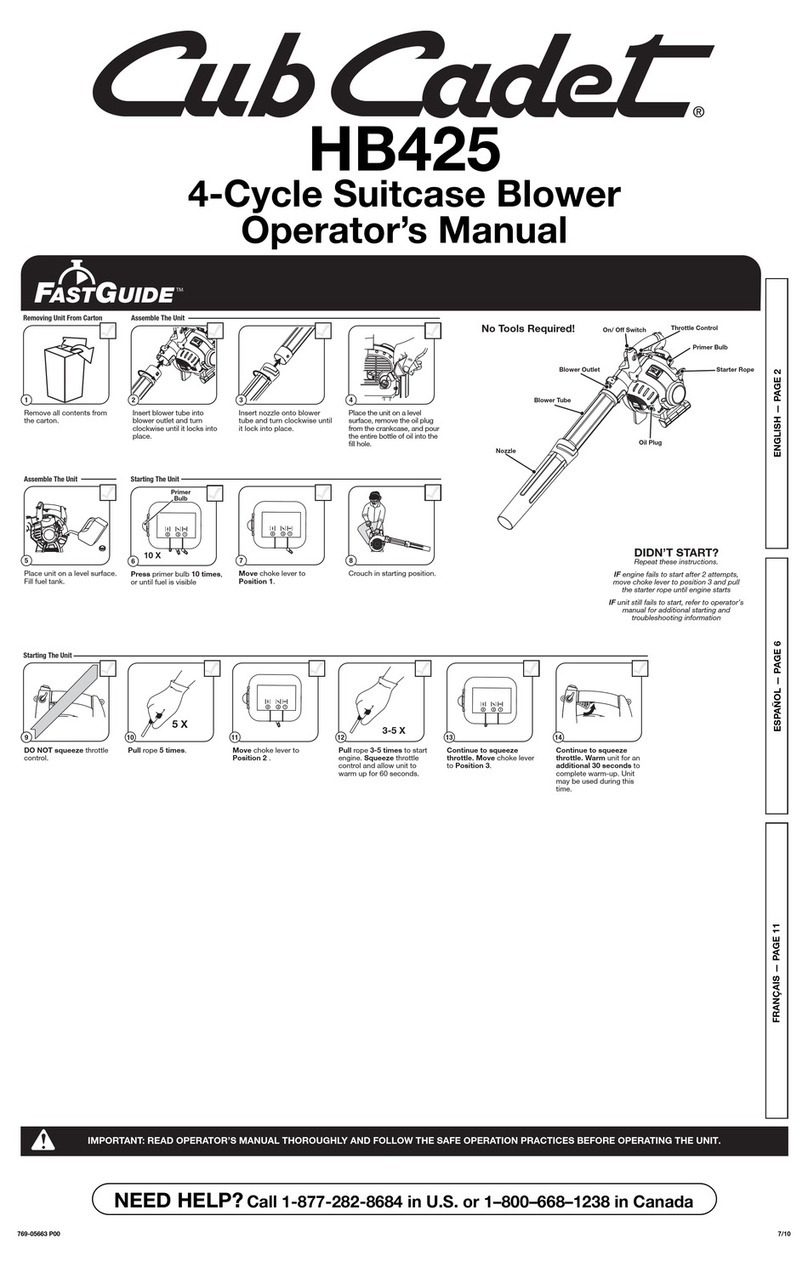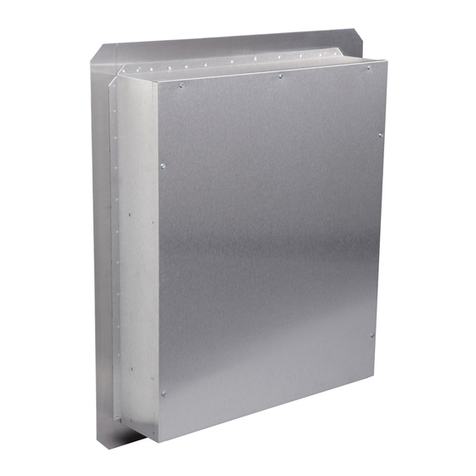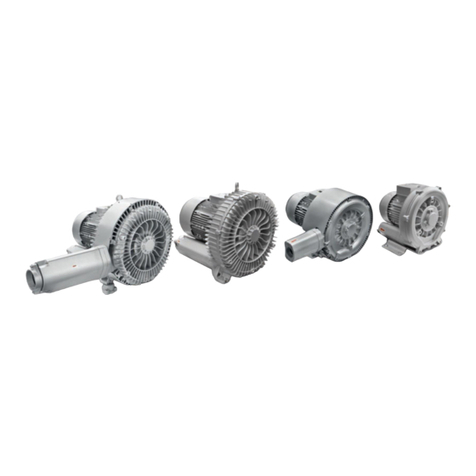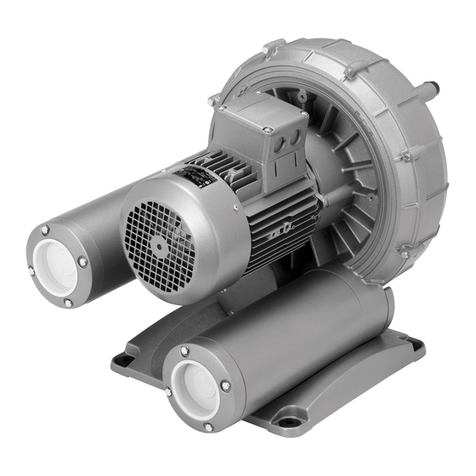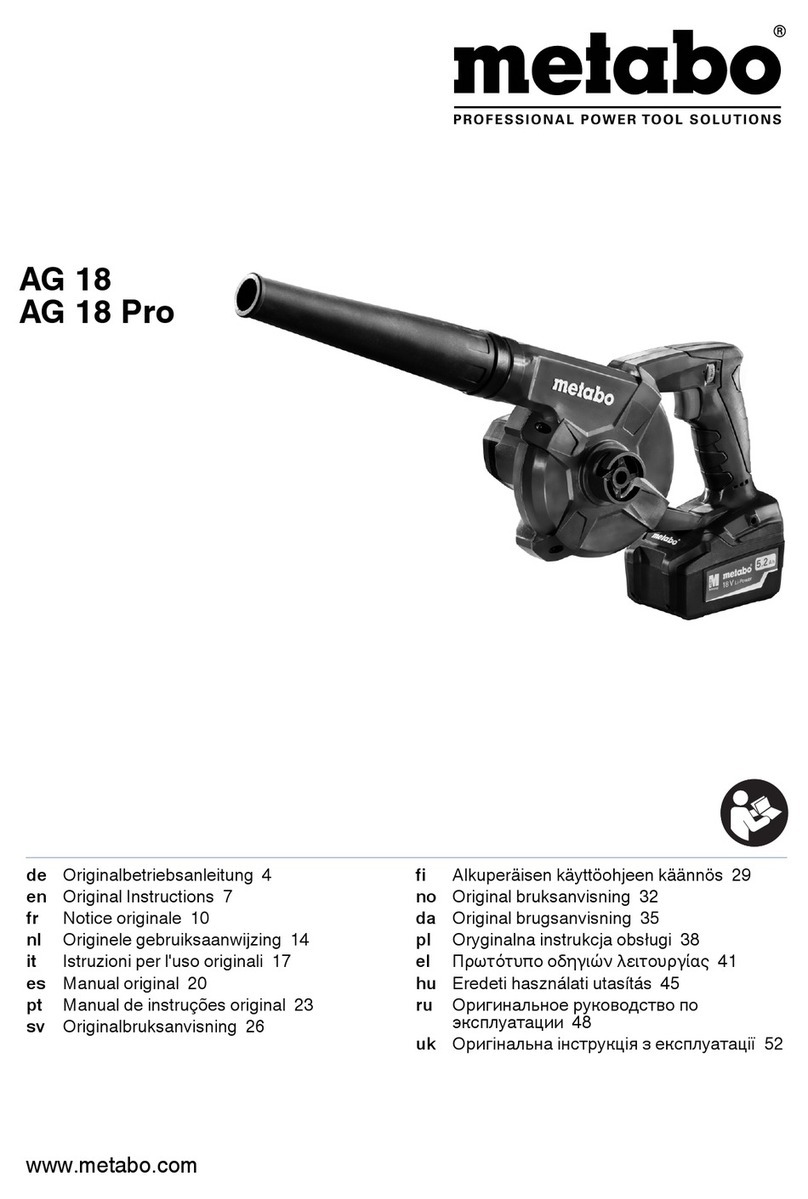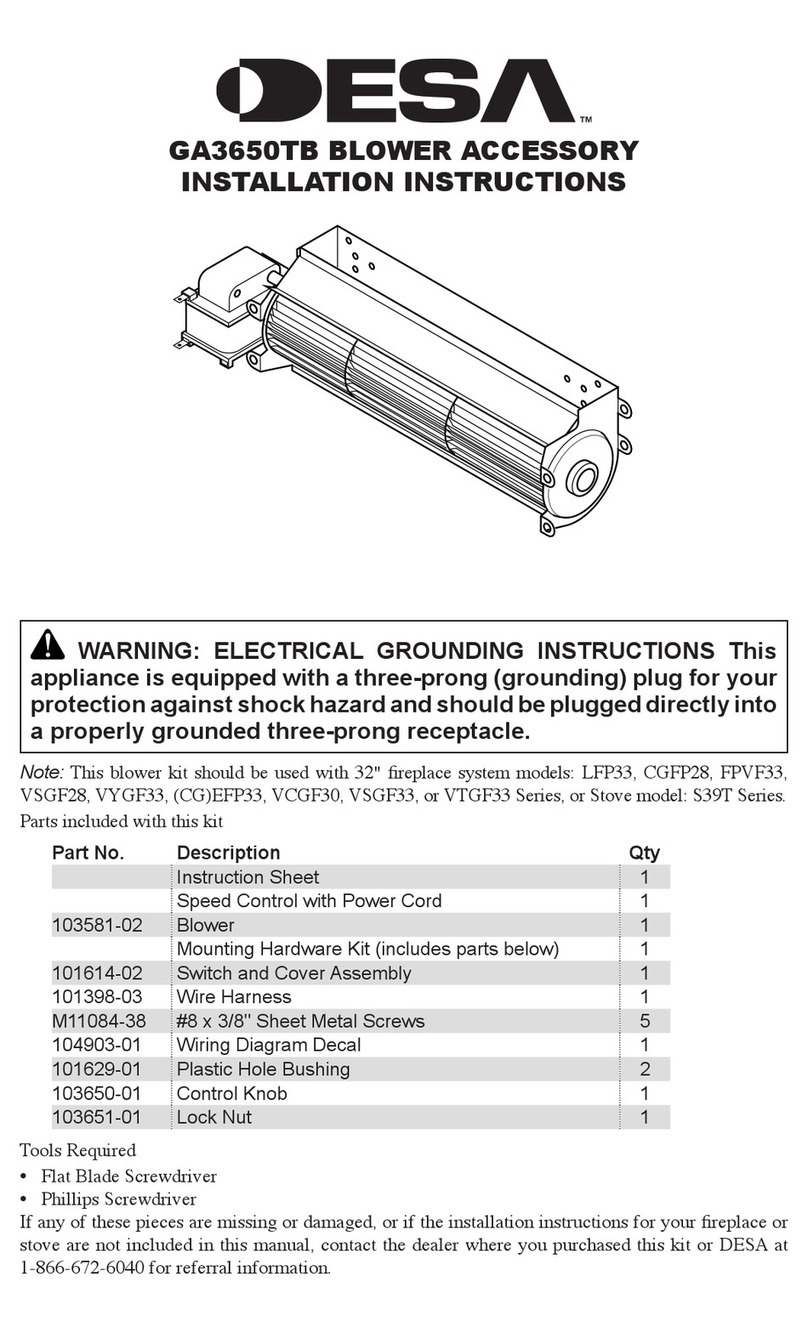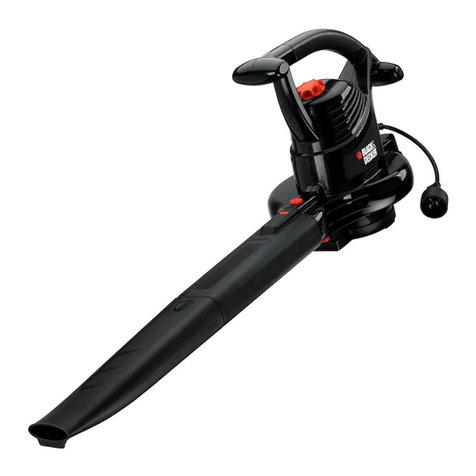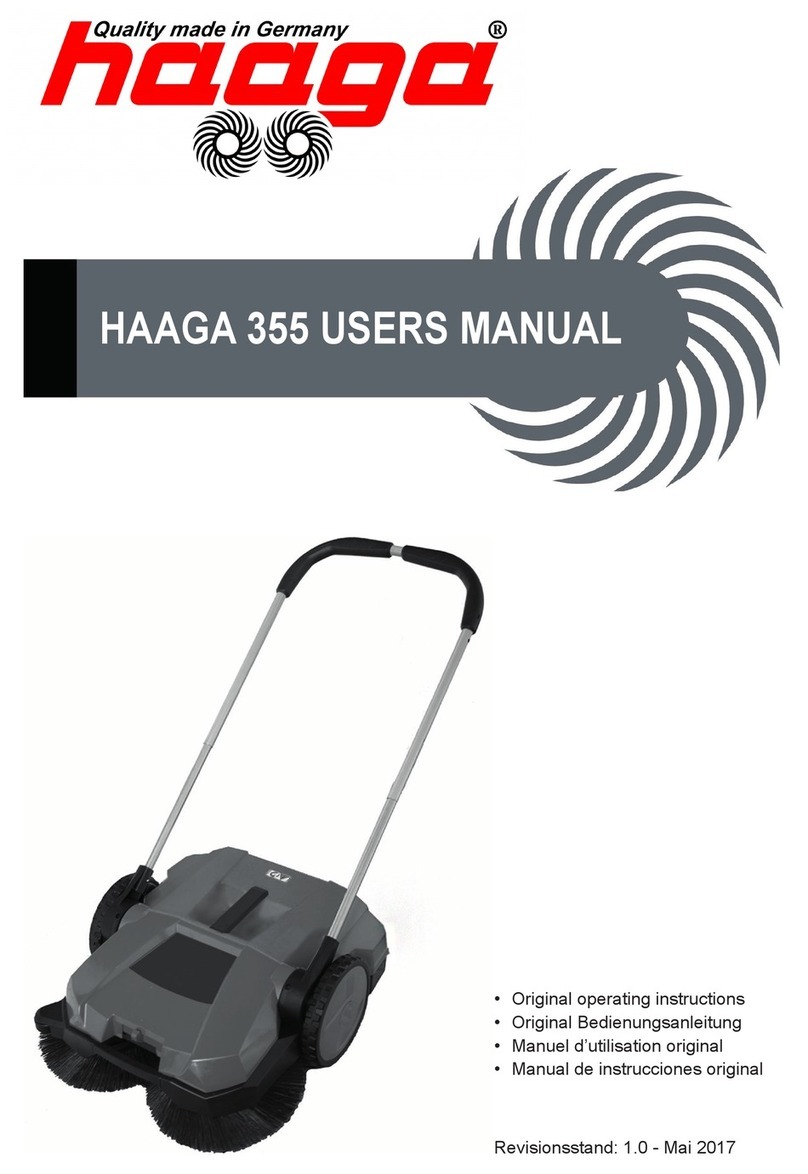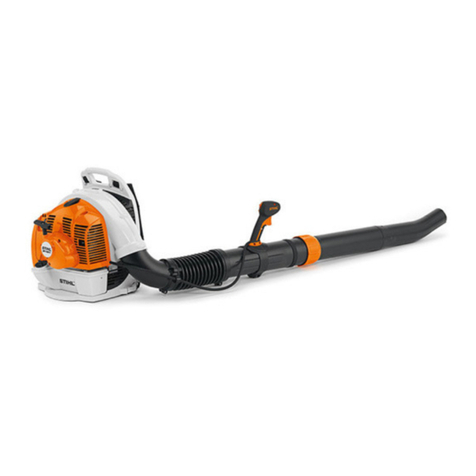
5
–inspecting the product after striking a
foreign object
■Immediately stop the engine in an event
of accident or breakdown. Do not operate
the product again until it has been fully
checked by an authorised service centre.
■The product is not intended for frequent
use. It is for occasional use for general
applications, such as blowing leaves, lawn
clippings, etc. It is not intended for prolonged
use. Prolonged periods of operation can
cause circulatory problems to your hands
due to vibration. For prolonged periods, it
is recommneded to use the product with an
anti-vibration feature.
BLOWER SAFETY WARNINGS
■Wear a face filter mask in dusty conditions
to reduce the risk of injury associated with
the inhalation of dust.
■Slightly dampen surfaces in dusty
conditions.
■Do not use the product near open windows.
■Use the full blower nozzle extension so that
the air stream can work close to the ground
and perform effectively.
■Do not point the blower nozzle in the
direction of people or pets.
■Never place objects inside the blower
tubes.
■Do not place the product on top of or near
loose debris. Debris can be sucked into the
intake vent, resulting in possible damage
to the product.
VACUUM SAFETY WARNINGS
WARNING
Never operate the vacuum with only the
upper vacuum tube tted. Failure to follow
this warning increases the risk of personal
injury.
NOTE: Without the lower vacuum tube tted,
it is much easier to reach up inside the tube.
■Do not operate the vacuum without the
debris collector bag assembly installed.
Flying debris could cause serious injury.
Make sure that the debris collector bag is
in good condition and completely closed
before operating the product.
■Move the vacuum from side to side along
the outer edge of the debris. To avoid
clogging, do not place the vacuum tube
directly into the debris pile.
■Hold the engine higher than the inlet end of
the vacuum tube.
■To avoid serious injury to the operator
or damage to the product, do not try to
vacuum up rocks, broken glass, bottles, or
similar objects.
■Avoid situations that could cause fire in
the debris collector bag. Do not operate
the product near an open flame. Do not
vacuum up warm ash from fireplaces and
barbecue pits. Do not vacuum up discarded
cigars or cigarettes unless the cinders are
completely cool.
■Keep all parts of your body away from
any moving part. Rotating fan blades
can cause severe injury. Stop the engine
and ensure that fan blades have stopped
rotating before opening the vacuum door,
installing or changing tubes, or opening or
removing debris bag.
■When feeding material into the product,
make sure that the pieces of metal, rocks,
bottles, cans, or other foreign objects are
not included.
■Do not allow processed material to build
up in the discharge zone. This may prevent
proper discharge and can result in kickback
of material through the intake opening.
■If the product becomes clogged, stop the
engine before cleaning the debris.
TRANSPORTATION AND STORAGE
■Stop the engine and allow the product to
cool down before storing or transporting.
■Clean all foreign material from the product.
■Drain all fuel from the tank into a container
approved for petrol. Remember to properly
replace and tighten the fuel cap.
■Run the engine until it stops. This will
